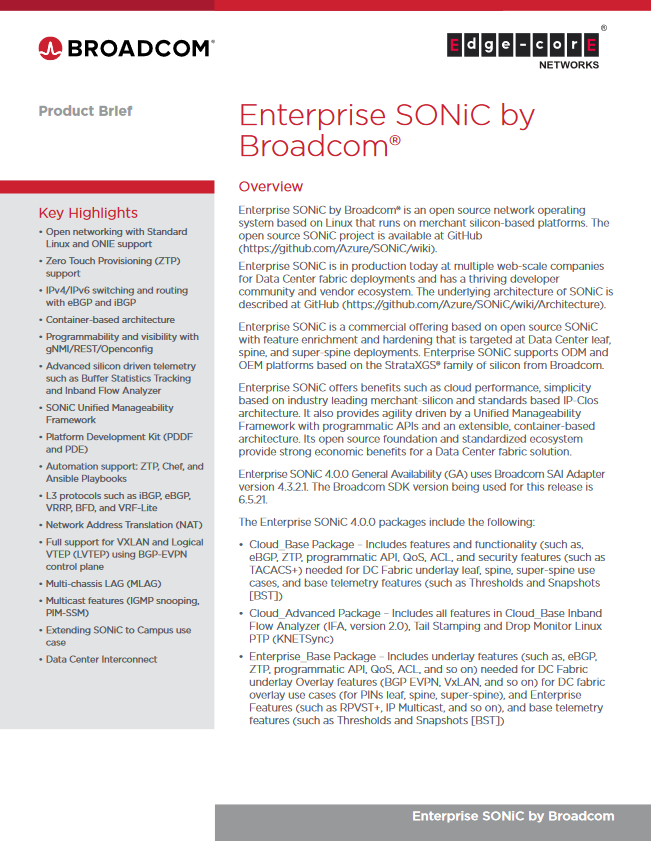
Overview
Enterprise SONiC by Broadcom® is an open source network operating system based on Linux that runs on merchant silicon-based platforms. The open source SONiC project is available at GitHub (https://github.com/Azure/SONiC/wiki).
Enterprise SONiC is in production today at multiple web-scale companies for Data Center fabric deployments and has a thriving developer community and vendor ecosystem. The underlying architecture of SONiC is described at GitHub (https://github.com/Azure/SONiC/wiki/Architecture). Enterprise SONiC is a commercial offering based on open source SONiC with feature enrichment and hardening that is targeted at Data Center leaf, spine, and super-spine deployments. Enterprise SONiC supports ODM and OEM platforms based on the StrataXGS® family of silicon from Broadcom.
Enterprise SONiC offers benefits such as cloud performance, simplicity based on industry leading merchant-silicon and standards based IP-Clos architecture. It also provides agility driven by a Unified Manageability Framework with programmatic APIs and an extensible, container-based architecture. Its open source foundation and standardized ecosystem provide strong economic benefits for a Data Center fabric solution.
Customer Use Cases
Data Center L3 CLOS Overlay Use Case (with VXLAN and BGP-EVPN) Starting with the 3.4.0 release, Enterprise SONiC can also be deployed in enterprises or service providers for select workloads, such as Hadoop, that require an overlay to support multi-tenancy.
Using an overlay architecture in the data center allows end users (network administrators) to place endpoints (servers or virtual machines) anywhere in the network and remain connected to the same logical Layer 2 network, enabling the virtual topology to be decoupled from the physical topology. This decoupling allows the data center network to be programmatically provisioned at a per-tenant level.
Overlay networking generally supports both Layer 2 and Layer 3 transport between servers or VMs. It also supports a much larger scale. SONiC overlay networks use a control-plane protocol (BGP-EVPN) to facilitate learning and sharing of endpoint information, and use VXLAN tunneling protocol to create the data plane for the overlay layer.
- Download
- Download 168
- File Size 894 KB
